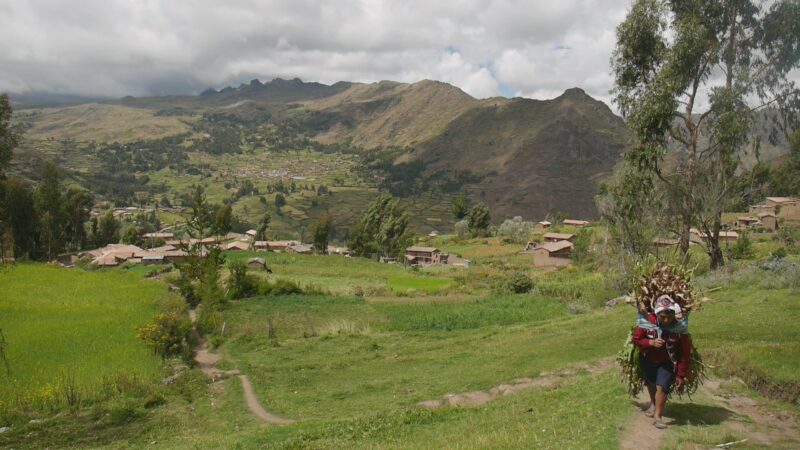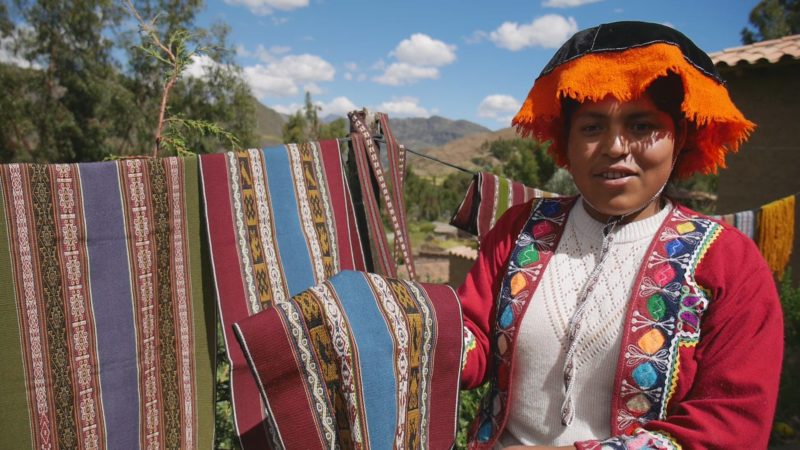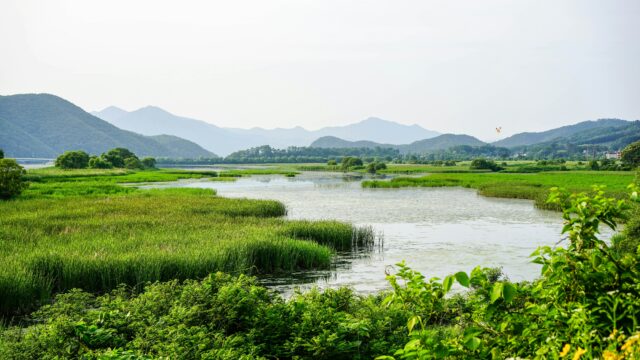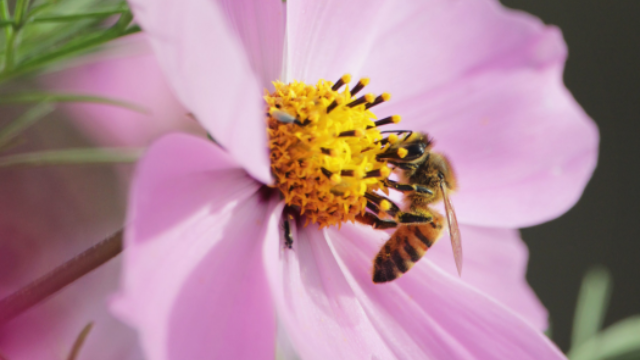Here's why Indigenous economics is the key to saving nature
Mainstream Western economics is destroying the environment - and the Indigenous knowledge that has conserved nature for millenia.

The GEC Insights series is a new curated collection of online articles at the intersection of environment and economics, each written by leading thinkers from the worlds of business, government and civil society. Part of our Economics for Nature project, they bring together diverse perspectives to answer the question: how can we re-design our economies to protect and restore nature?
Western economics is not only destroying the environment. It is also destroying Indigenous peoples’ holistic development models that ensure balance with nature, and provide alternative paradigms for sustainable development.
For many of the world’s 476 million Indigenous peoples, balance and reciprocity with nature are fundamental principles that guide all aspects of life. Rather than privileging human economic goals, and pursuing nature conservation separately, many Indigenous societies seek to achieve ‘holistic wellbeing’ or ‘Buen Vivir’, which means the wellbeing of both people and nature together.
Take the Quechua and Aymara people in Peru, for example, who make up nearly a fifth of Peru’s population. According to their Andean cosmovision, the world is divided into 3 communities or ‘ayllus’: i) the wild or natural world, ii) the human and domesticated world, and iii) the sacred world. To achieve wellbeing (‘Sumaq Causay’), these three communities must be in balance, which requires reciprocity between them (‘ayni’).
These Andean concepts come from the Incas, the largest pre-Columbian empire, and are still very much alive in the Andes. So too are barter markets, which provide people at different altitudes with access to essential nutrients and help sustain rich Andean biodiversity.
Balance with nature, reciprocity and solidarity (the obligation to help those in need) are key principles embedded in many Indigenous cultures across the world, from the Americas, to China, India and Kenya. These Indigenous economies promote sufficiency rather than infinite growth, and equity and redistribution of wealth rather than accumulation. Many subsistence economies are also characterised by circular agriculture models, which minimise waste and carbon emissions.
The separation of people and nature threatens both
In Peru and across the world, the nature- and people- friendly informal economies of Indigenous peoples are steadily being eroded by Western, neo-liberal economic policies which separate people and nature, and view Indigenous cultures and subsistence economies as ‘backward’ and in need of modernisation. Ironically, the same Indigenous economies which have conserved and enhanced biodiversity for millennia are now threatened by environmental policies which often fail to recognise the value of Indigenous knowledge, thus contributing to its erosion.
Most of the world’s remaining biodiversity is located on lands owned or managed by Indigenous peoples. A global scientific assessment by the Intergovernmental Panel on Biodiversity and Ecosystem Services (IPBES) found that “nature is generally declining less rapidly in Indigenous peoples’ lands than in other lands”.
“ The dominant approach to nature conservation through protected areas also reflects a western worldview that separates people and nature, often excluding Indigenous people to protect biodiversity.”
However, the IPBES assessment also found nature managed by Indigenous peoples and local communities (IPLCs) is under increasing pressure, as is the knowledge of how to manage it. Areas managed by IPLCs “are facing growing resource extraction, commodity production, mining and transport and energy infrastructure”.
Negative impacts from all these pressures include “continued loss of subsistence and traditional livelihoods” and impacts on “health and wellbeing from pollution and water insecurity”. These impacts “also challenge the transmission of Indigenous and local knowledge” and “the ability of indigenous peoples and local communities to conserve and sustainably manage wild and domesticated biodiversity that are also relevant to broader society”.
Mainstream economic activities on Indigenous lands have rarely benefited Indigenous peoples, who make up 6% of the world’s population but 19% of the extreme poor. In fact, their situation has often deteriorated, due to loss of land and natural resources, weakening of cultural ties and social cohesion. Integration with market economies has led to social tension and conflict, limited opportunities for meaningful employment, low returns for producers, and a shift towards consumerist lifestyles.
The dominant approach to nature conservation through protected areas also reflects a western worldview that separates people and nature, often excluding Indigenous people to protect biodiversity. Many state-run protected areas have resulted in negative social impacts, are losing biodiversity, and are not effectively or equitably managed, as IPBES found.
Bridging the divide
Clearly, alternative development and conservation models that bridge the nature-people divide are urgently needed to achieve the 2030 Sustainable Development Goals. Indigenous peoples’ holistic worldviews provide alternative development paradigms, which benefit both people and nature.
For example, Indigenous peoples’ ‘mixed economies’, which combine subsistence and market activities, sustain Indigenous values that underpin biodiversity conservation, while contributing to nutrition, health, wellbeing and climate resilience, and generating income. Local markets and short value chains are often prioritised, rather than global export markets.

Indigenous peoples have started to shape new community enterprise models that assert control over their territories and promote Indigenous traditions of sustainability and enterprise for the common good. These Indigenous enterprises have delivered multiple benefits for livelihoods, culture, social capital and biodiversity conservation.
For example, in the Potato Park in Peru, a Biocultural Heritage Territory governed by 6 Quechua communities, collective micro-enterprises (for gastronomy, agro-ecotourism, crafts, herbal teas etc) are guided by Andean principles and holistic wellbeing goals. Ten percent of the revenues from each micro-enterprise is invested in a communal fund and redistributed annually to reward biocultural heritage stewards and help those in need.
“ Indigenous peoples have answers for many of the world’s most intractable challenges: inequality, ecocide, climate change. We cannot address these challenges without their wisdom and leadership.”
Thanks to their ancestral Indigenous knowledge, linked with science, the Potato Park communities have ensured food security despite severe climate change impacts and the Covid-19 pandemic. During the pandemic, the communities donated a ton of potatoes to hungry people in Cusco, in line with the principle of solidarity. The social ties and mutual care and solidarity that indigenous communities have displayed in the pandemic, highlights the type of social relations that are core to resilient economies and an inclusive green recovery.
The concept of “biocultural heritage”, which is derived from Indigenous peoples’ holistic worldviews and traditions, recognises the inextricable linkages between nature, culture and development.
The way forward
A new narrative is needed which recognises the highly progressive and dynamic nature of Indigenous knowledge and economic systems which put nature and equity at the heart of development. Indigenous peoples have a leading role to play in shaping alternative paradigms to mainstream economic models that are destroying the environment and traditional cultures.
Achieving the Sustainable Development Goals, and undoing years of racial injustice that lie at the root of poverty and inequality, requires structural reform across economic and environment sectors, from local to global levels, to put Indigenous peoples at the heart of decision-making.
This year provides an opportunity for governments and political leaders to demonstrate real commitment to achieving the SDGs and leaving no-one behind. It is not too late to reform the leadership structure for the UN Food Systems Summit in September 2021, so that representatives of poor, hungry, marginalised and Indigenous peoples play a leading role. Or to reform the proposed post-2020 Global Biodiversity Framework, to be agreed at the Biodiversity Convention COP 15 in October, so that the knowledge and leadership of Indigenous peoples and local communities, is integrated across the Targets.
Indigenous peoples have answers for many of the world’s most intractable challenges: inequality, ecocide, climate change. We cannot address these challenges without their wisdom and leadership.
- Krystyna Swiderska, International Institute for Environment and Development
For further information on biocultural heritage, see: www.bioculturalheritage.org


